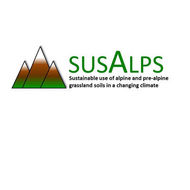Predicting forage quality of species-rich pasture grasslands using vis-NIRS to reveal effects of management intensity and climate change (2020.0)
Berauer B., Wilfahrt P., Reu B., Schuchardt M., Garcia-Franco N., Zistl-Schlingmann M., Dannenmann M., Kiese R., Kühnel A., Jentsch A.
Agriculture, Ecosystems & Environment, 296 (), 106929
doi:10.1016/j.agee.2020.106929
Abstract
With a growing human population facing multiple global change drivers (i.e. climate change and land management change), the future of food security is of major importance. Sustainable agriculture is therefore key to ensure food supply and food security under future climatic conditions. Forage provision (composed of forage quantity and forage quality) is an important ecosystem service of grasslands for dairy production. However, monitoring forage quality in semi-natural species-rich grasslands is rarely done due to the inherent complexity in determining forage quality, high variability within natural systems and financial and workload restrictions. Here, we i) demonstrate the ability of visible-near-infrared spectroscopy (vis-NIRS) to predict forage quality of bulk samples of species-rich montane pastures and ii) show its potential to reveal effects of two key global change drivers, climate change and land management, on forage quality. Spectral information and chemometrics allowed us to predict three (ash, fat and protein) out of four analyzed forage quality parameters with high accuracy. Land management intensity strongly influenced species-rich grasslands’ protein and fat content, whereas altered climatic conditions influenced ash and fat content. High management intensity increased protein content of high- and mid-elevation pastures by 22 % and 30 % and fat content by 19 % and 20 % respectively. Though forage quality was improved by intensive land management, extensive land management generally revealed sufficient forage quality for livestock. Vis-NIRS provides a rapid, cost-efficient and high-throughput technique to analyze forage quality, revealing effects of global change drivers on forage quality of grasslands. This approach will help to support stakeholders assure optimal nutrition feeding of livestock and achieve steps towards sustainable agriculture.
